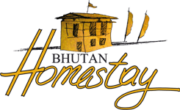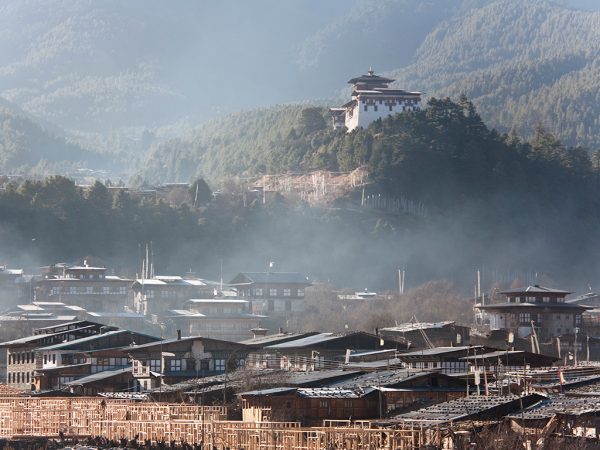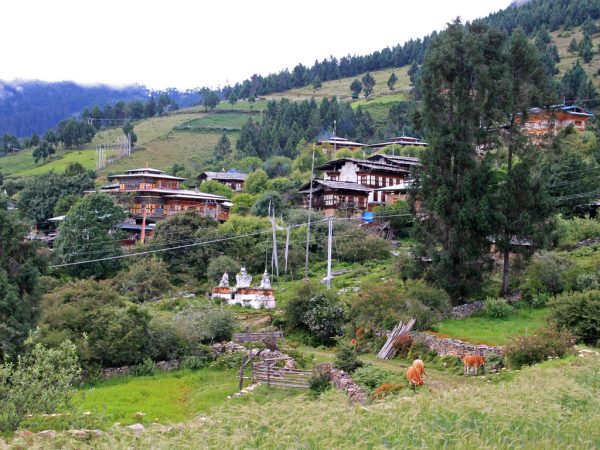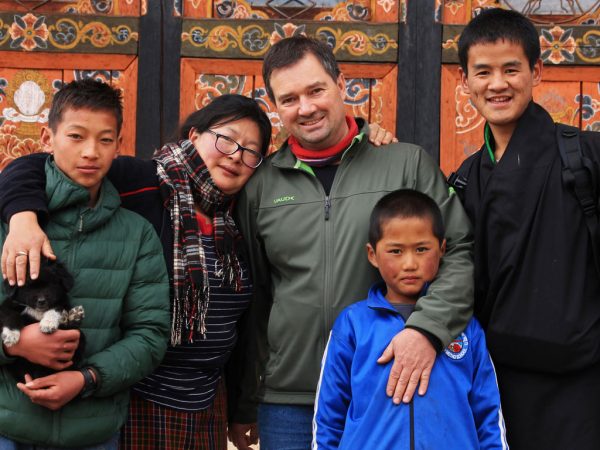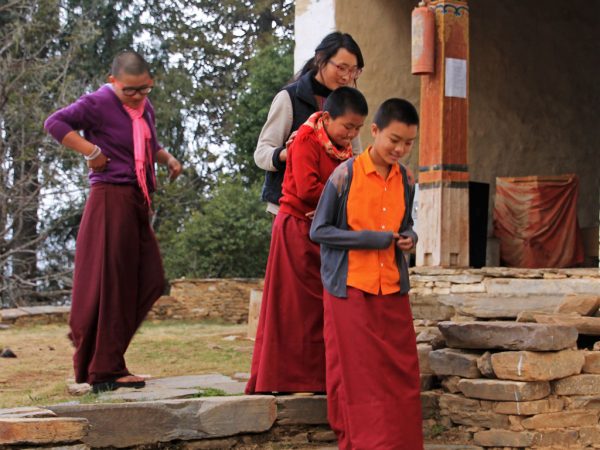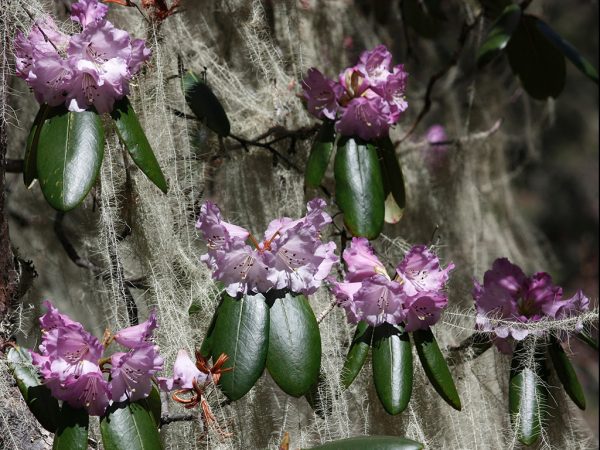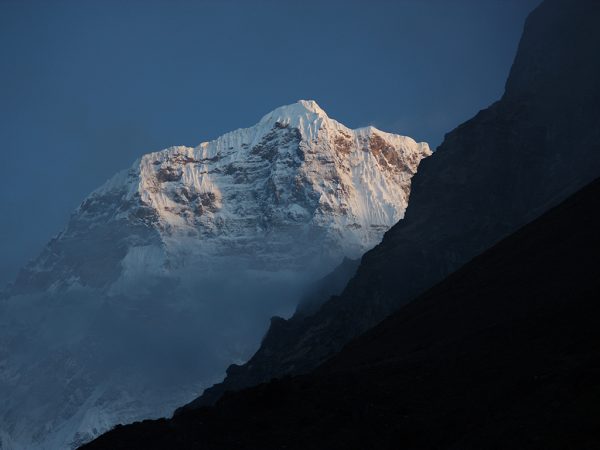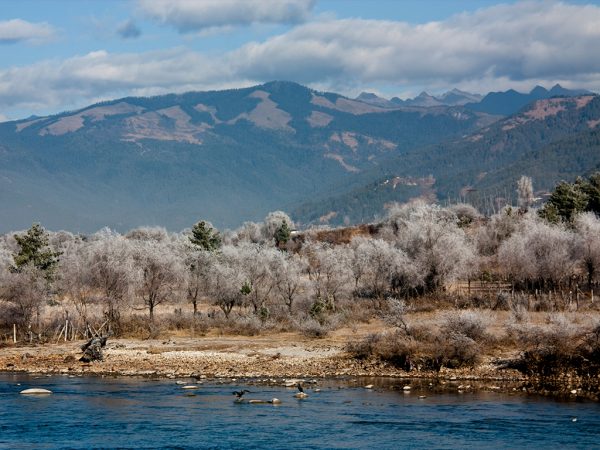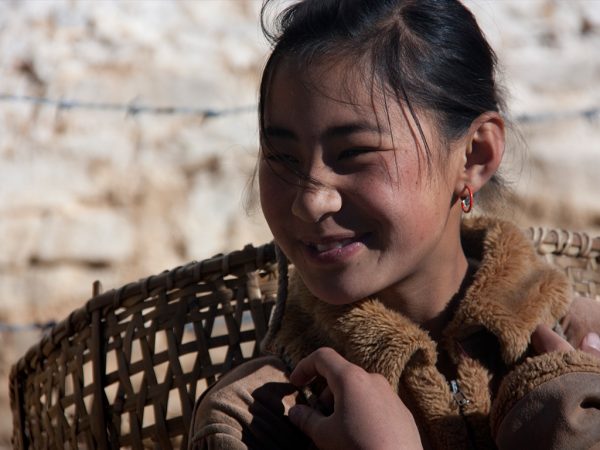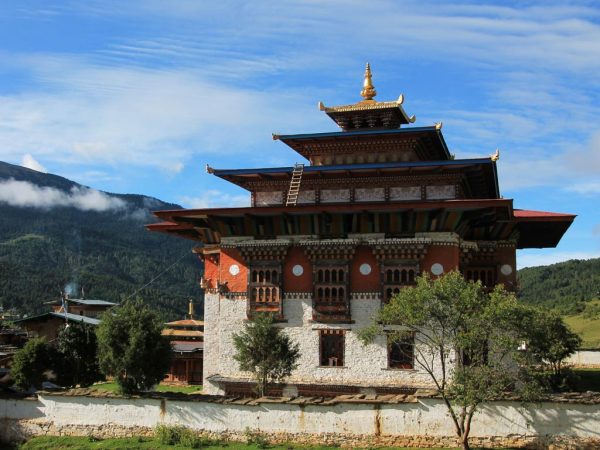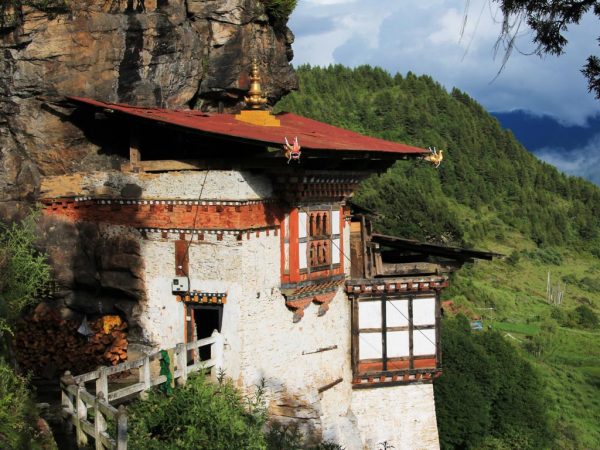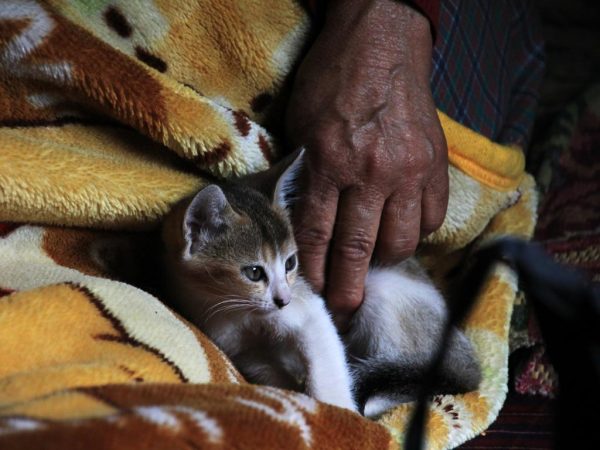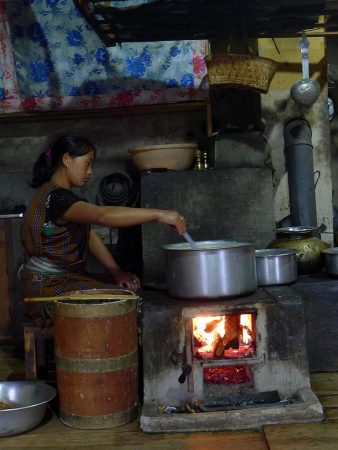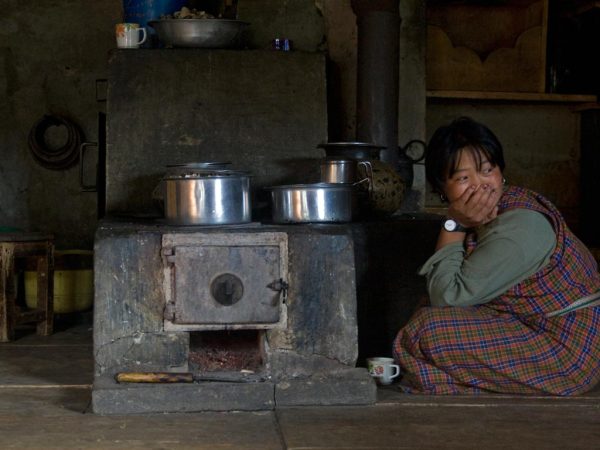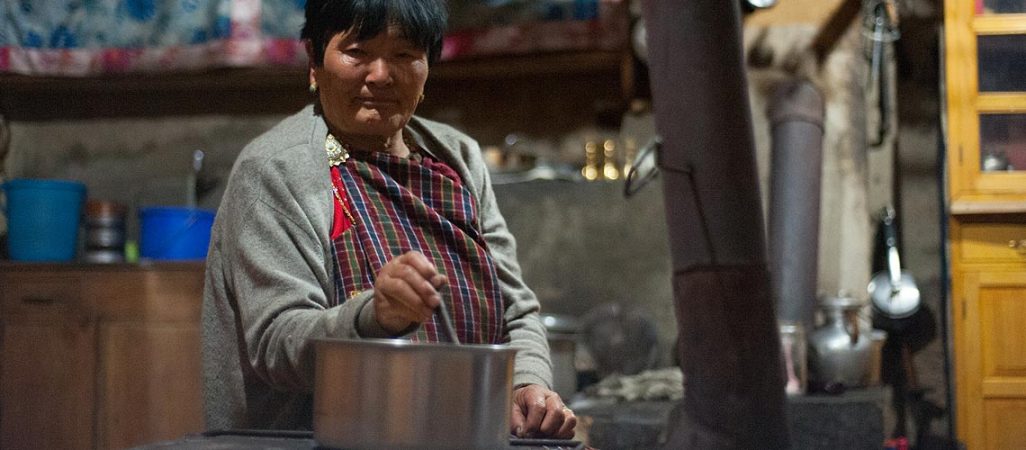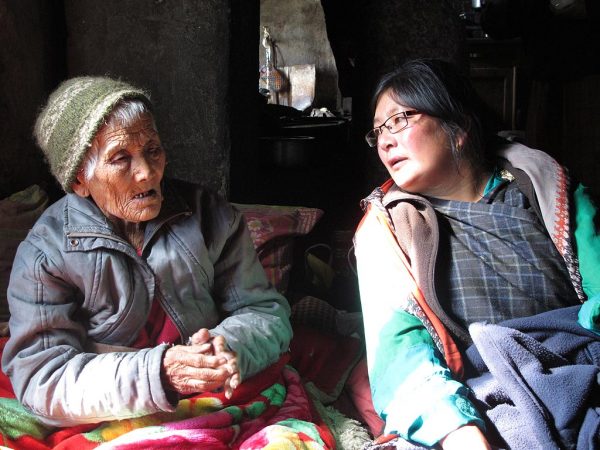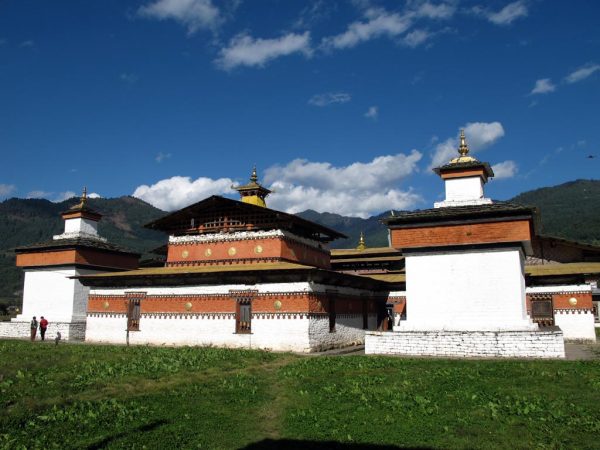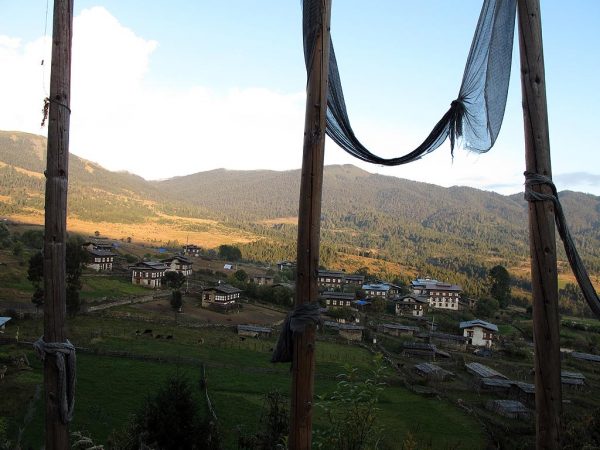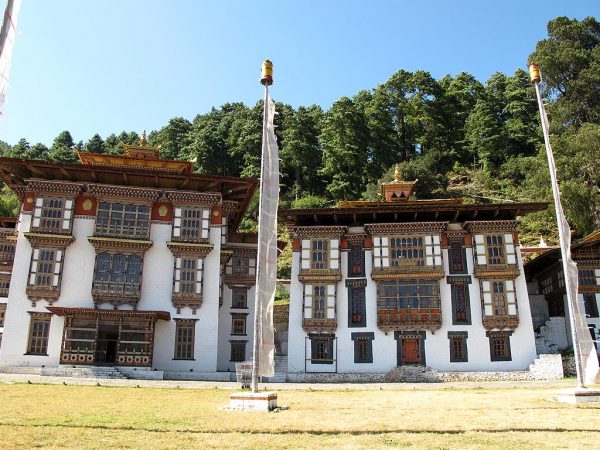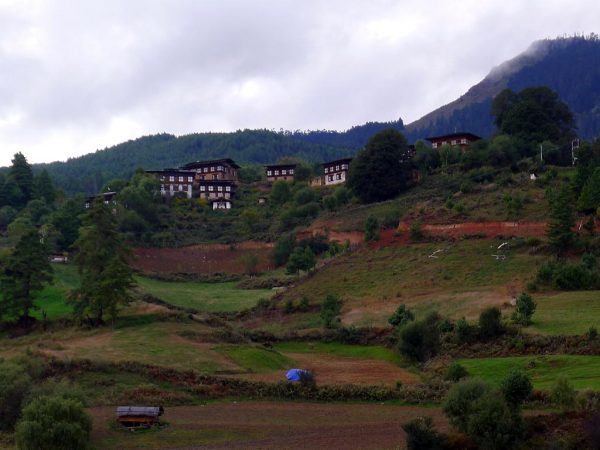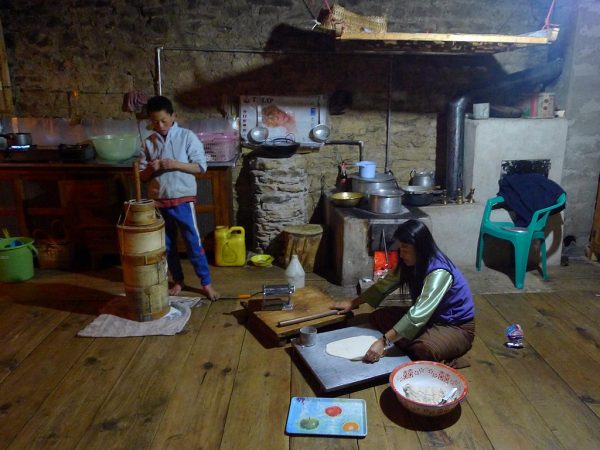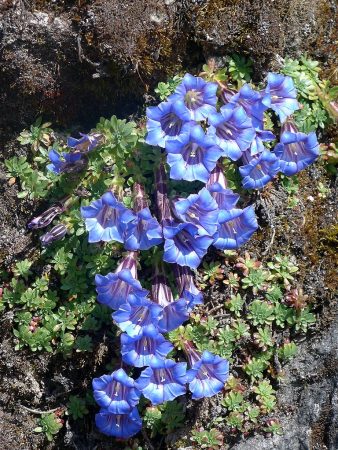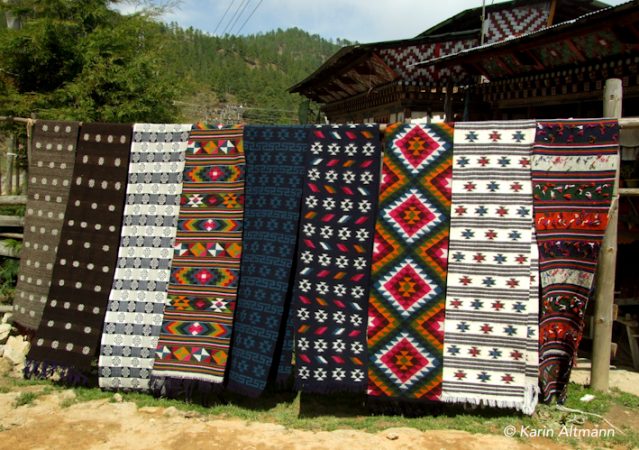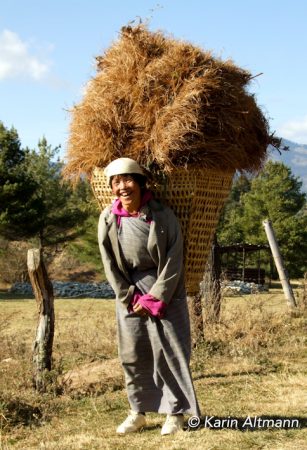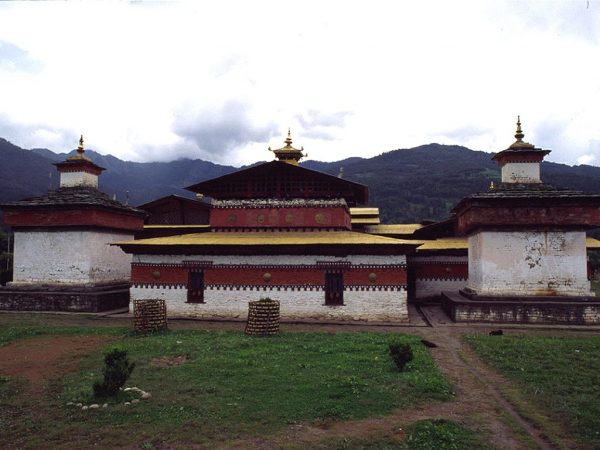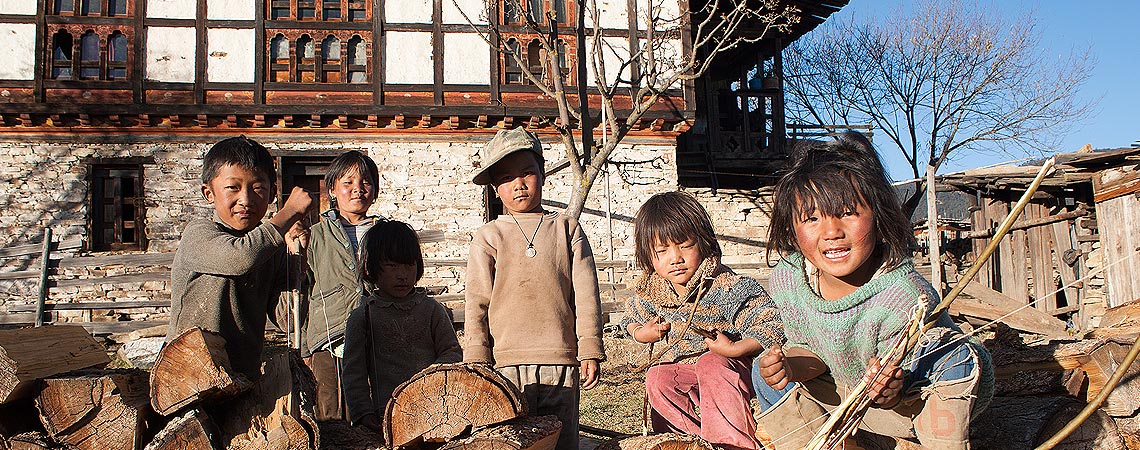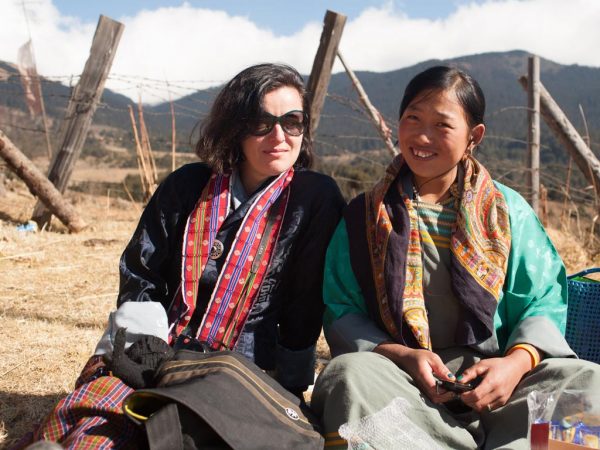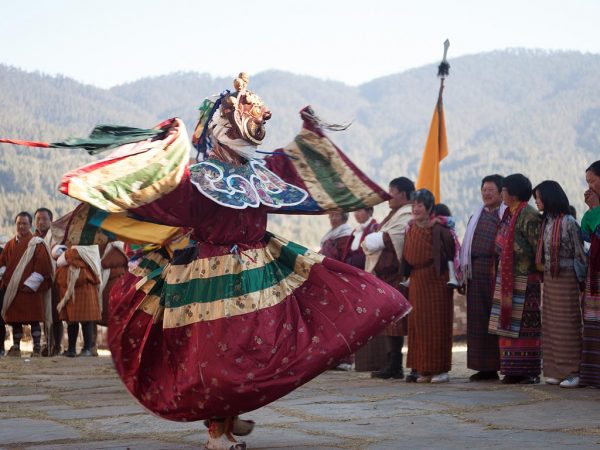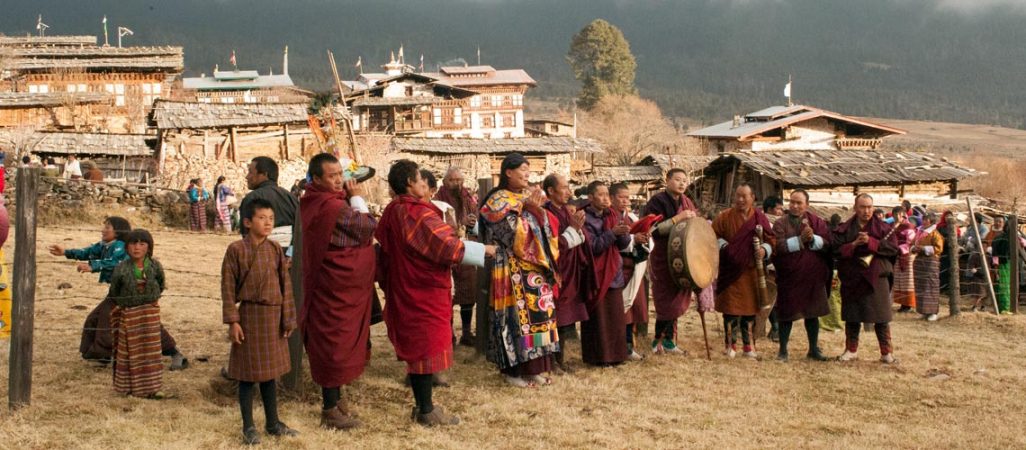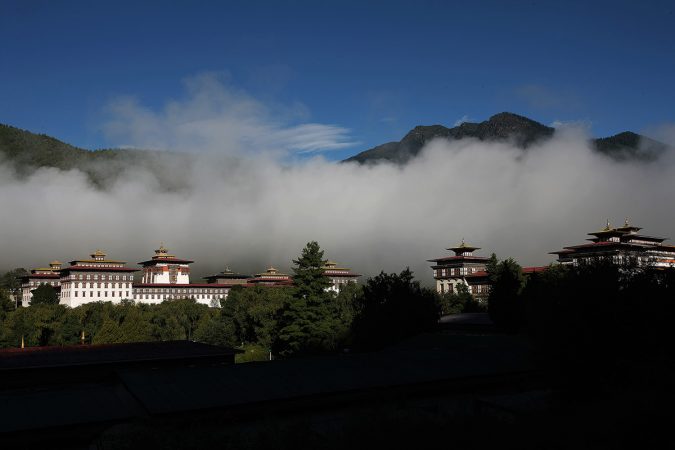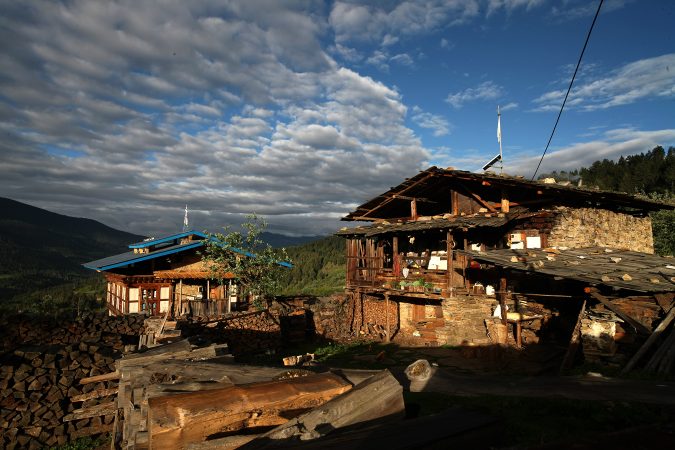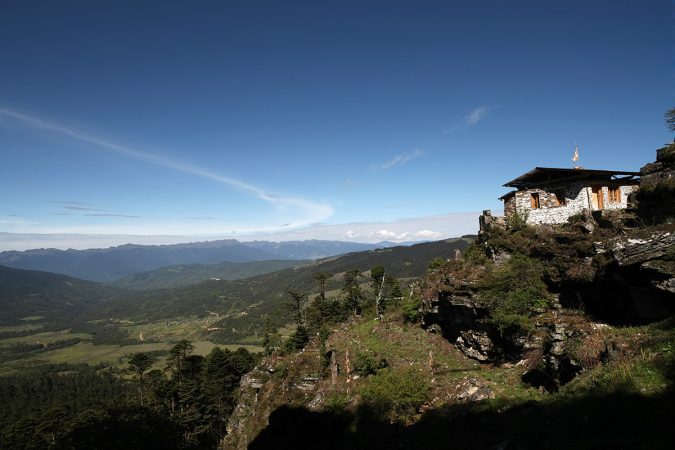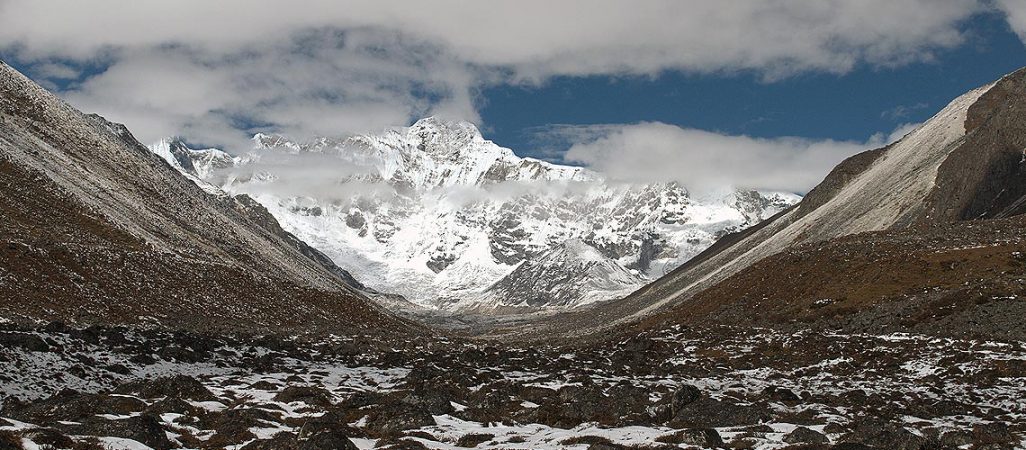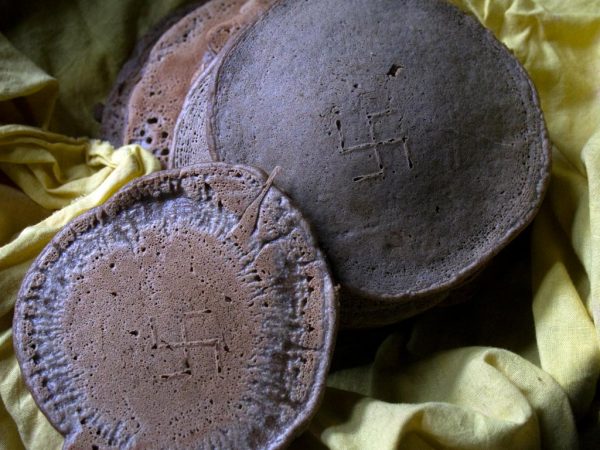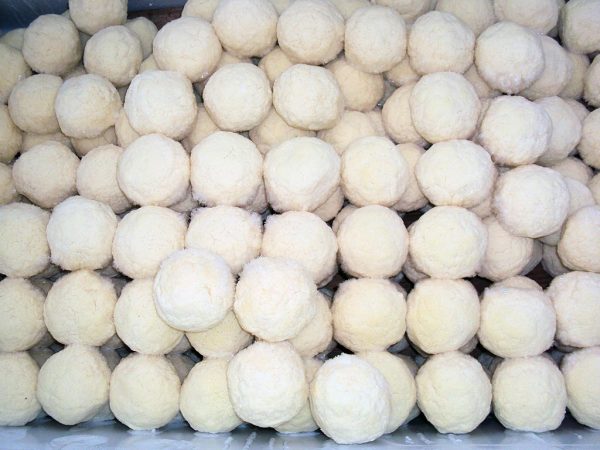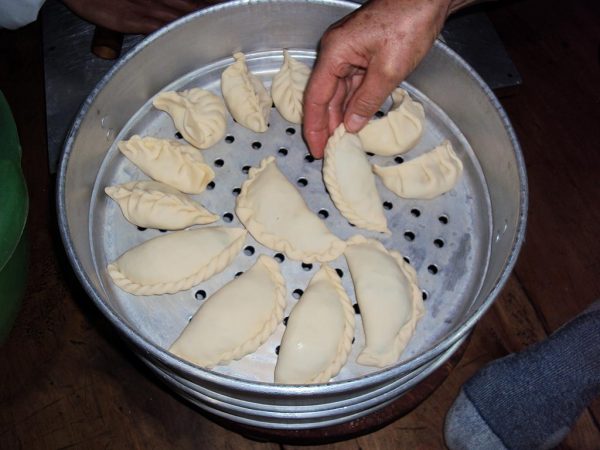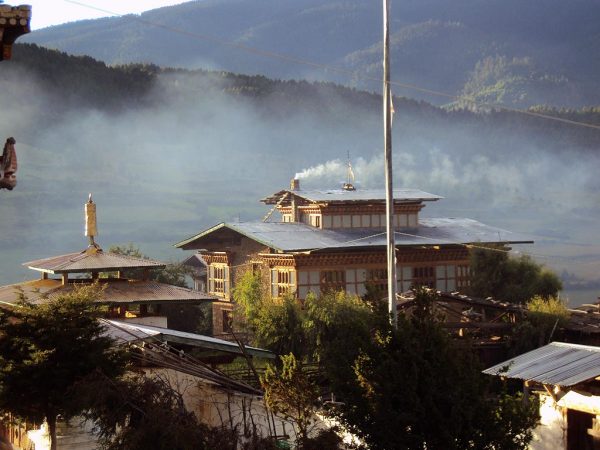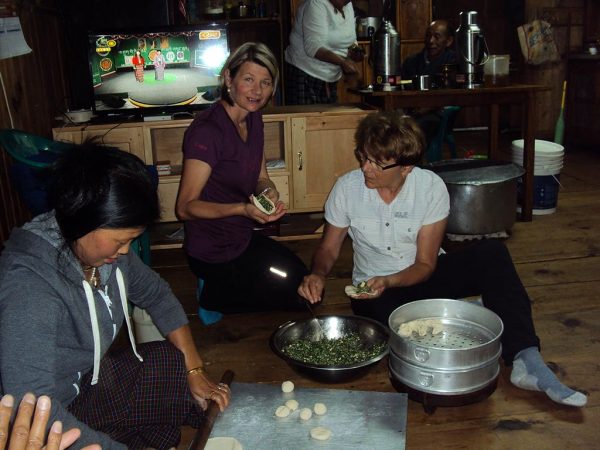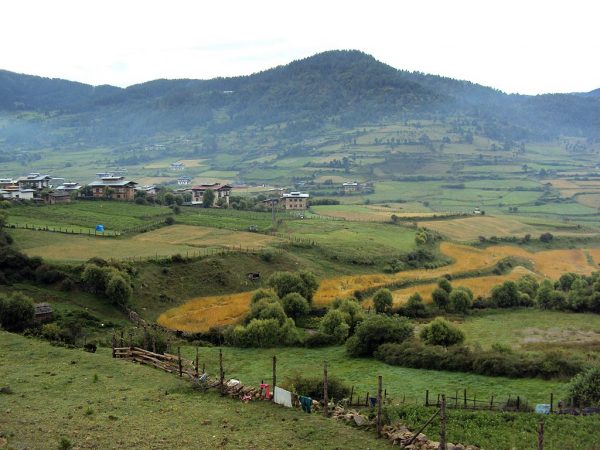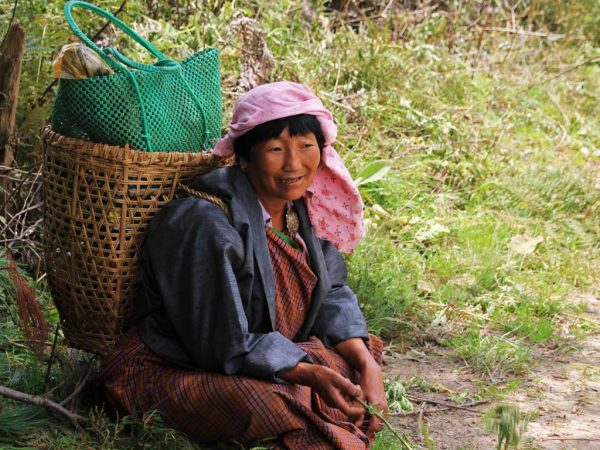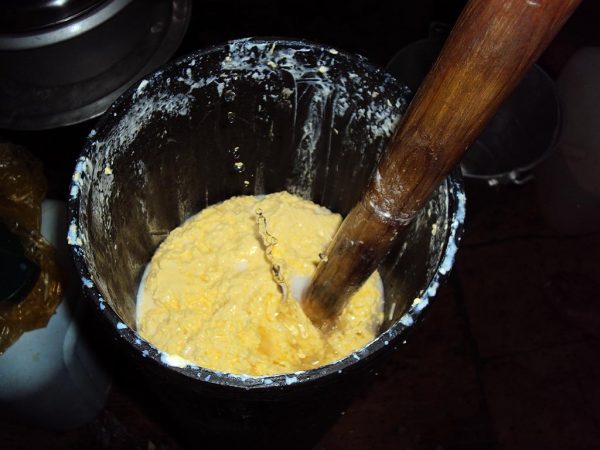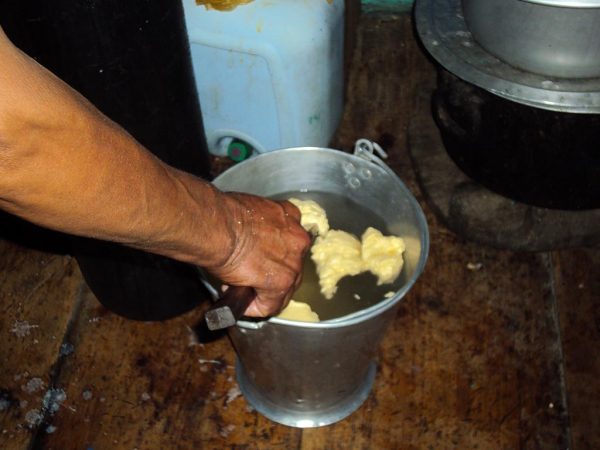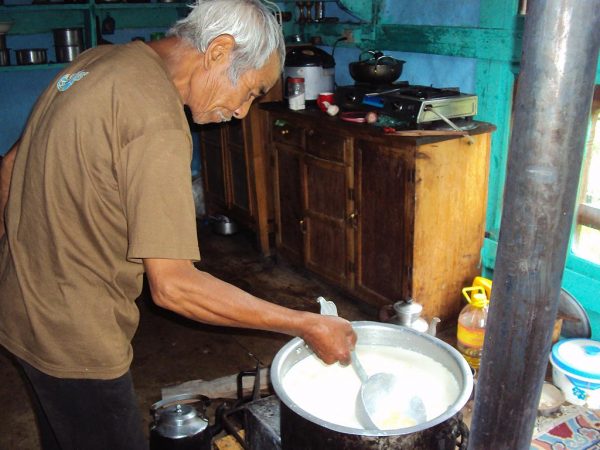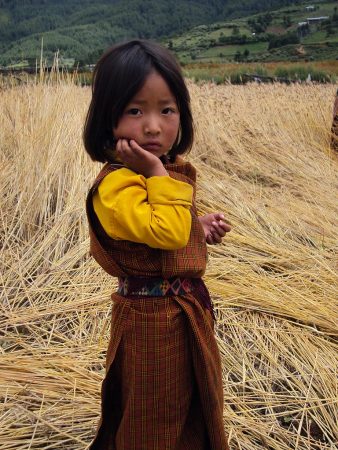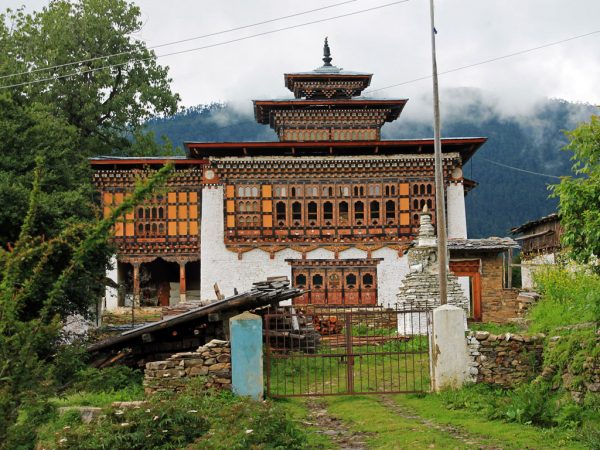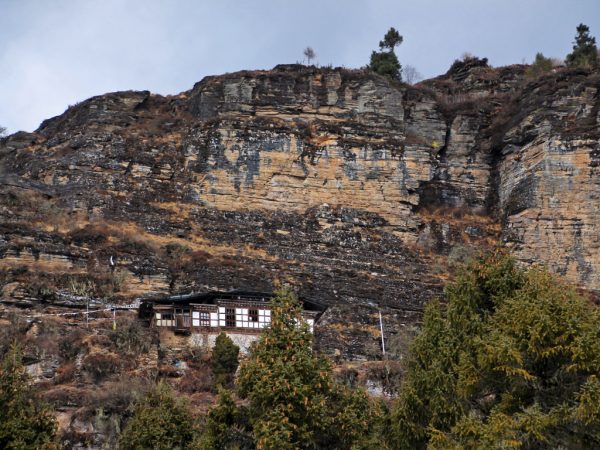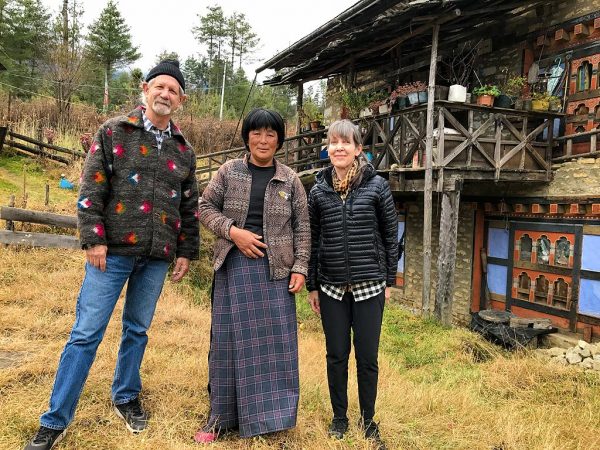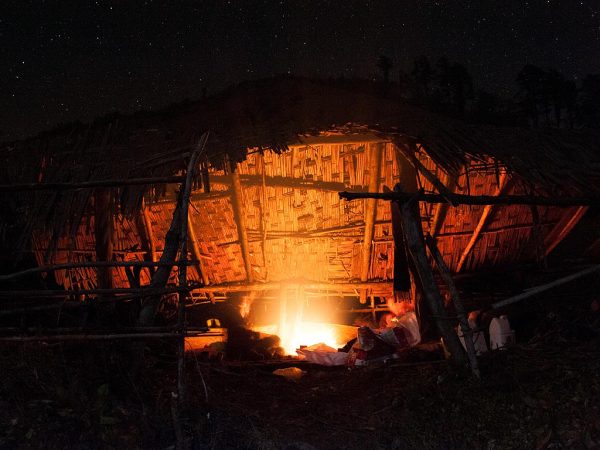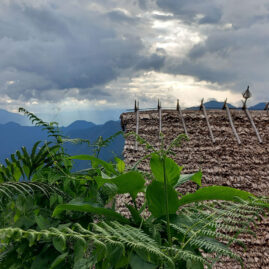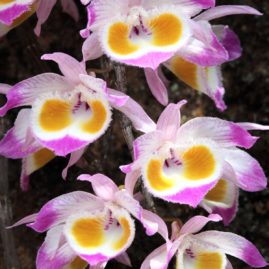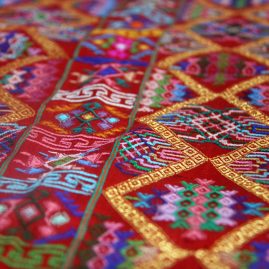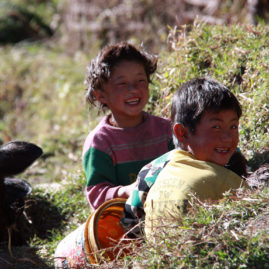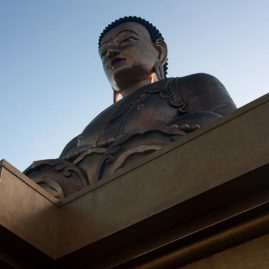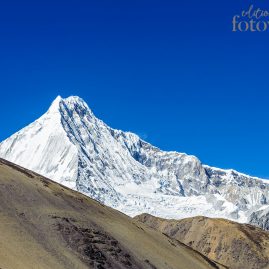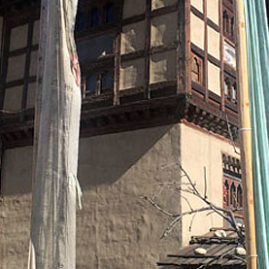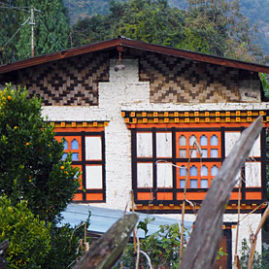The Spiritual Heartland
Central Bhutan covers Bumthang and Trongsa in the North and Zhemgang. The two districts of Trongsa and Bumthang are historically very important because they were the seats of power during the reign of the first and second Kings. In the 1950s the capital was shifted to Thimphu.
Bumthang is considered the spiritual heartland of Bhutan harboring immense cultural and religious treasures. It is in all essence a ‘sacred valley’ with tales of Guru Rinpoche and ‘tertons’ (treasure discoverers) still lingering throughout the place. Religious history manifests today in the many Lhakhangs (temples) and Nye (sacred spots) dotteding the breathtakingly scenic landscape in the four main valleys: Chumey, Choekhor, Tang, and Ura.
In Bumthang you can experience the charm of alpine village life and encounter farmers in their daily lives and homes. The landscape is picturesque. While rice and asparagus cultivation has been introduced to Choekhor and Tang valleys, the tough terrain of Ura is known for livestock and dairy products as well as potato cultivation.
Buckwheat used to be the staple diet in Bumthang and is still cultivated as an important item for local religious rituals and customs. Furthermore buchwehat is the main ingredient for kuli (buckwheat pancake) and puta (buckwheat noodles).
Bumthang is also known for its textile art, in particular for the Bumthap matha pattern and the woolen yathra weaving.
Bumthang offers many beautiful hikes and treks where one can experience stunning natural beauty, encounter rare birds and wild animals. On a side note, mushroom aficionados will be happy to hear, that the forests around Ura are habitat to the boletus reticuloceps, a very tasty mushroom and highly sought after in Western cuisine.
Dzongs, Monasteries and Temples
TRONGSA
Trongsa Dzong
Trongsa Choekhor Rabtentse Dzong was built in 1648; it was the seat of power over central and eastern Bhutan. Both the first and second kings of Bhutan ruled the country from this ancient seat. All four kings were invested as Trongsa Penlop (“governor”) prior to ascending the throne. The dzong is a massive structure with many levels, sloping down the contours of the ridge on which it is built. Because of the dzong’s highly strategic position, on the only connecting route between east and west, the Trongsa Penlop was able to control effectively the whole of the central and eastern regions of the country from here. The Dzong contains 23 temples.
Trongsa Tadzong and Museum
Ta Dzong, which means “watchtower”, was built by Choeje Minjur Tenpa, the first governor of Trongsa, in the year 1652. The tower stood guard over the Trongsa Dzong to protect the main stronghold of the town from any external threats. The temple located at the top of Ta Dzong is dedicated to the culture hero and protector King Gesar, and probably dates to the end of the 19th century. Changchub Tsondru, the Tibetan lama of Jigme Namgyal, the Governor of Trongsa and father of the first King, lived and died in Ta Dzong in 1856.
From 2005 to 2008 the watchtower underwent extensive structural and interior designing work in order to become a museum. The funds were granted by the Austrian Government and work was done by the Royal Government of Bhutan. The museum was opened in 2008, in celebration of three auspicious occasions: enthronement of the fifth King, recognition of 100 years of Monarchy and introduction of democracy in the country. The museum showcases some of the rare and priceless artifacts belonging to the monarchy.
Karma Drubdey Palmo Chos Kyi Dingkhang nunnery
Karma Drubdey Palmo Chos Kyi Dingkhang Nunnery is located 24 kilometers away from Trongsa Dzong, on the road leading to Zhemgang and Gelephu. It was built on a hill slope above Kuenga Rabten Palace and is about 30-minutes walking distance from Kuenga Rabten. Furthermore a feeder road connects the main highway to the nunnery. The nunnery serves as a monastic school (shedra), retreat center (drupde) and monastic institution (dratshang).
Karma Drubdey Pelmo Chos Kyi Dingkha Nunnery was founded by the Venerable Khenpo Tshultrim Jamtsho in 1968. He came from Tibet and was granted refugee status in Bhutan by Queen Ashi Phuntsho Choden Wangchuck. Along with 13 nuns who escaped with him from Tibet, Khenpo stayed in Kuenga Rabten palace and Buli Lhakhang in Bumthang. Today Khenpo lives in Nepal. During Khenpo’s stay in Kuenga Rabten Palace, it was said that he once went for a walk with elderly nuns and local people. On their way, he was suddenly nowhere to be found. After many hours of searching, finally they saw a yellow spot in the middle of the rocky mountain above Kuenga Rabten Palace. When the search group reached the spot, they saw Khenpo meditating inside a small cave in the location where the present nunnery’s main temple is located. Khenpo declared this place as his abode, and later erected a small temple. After the completion of the main temple, Khenpo, along with a few nuns, shifted from Kuenga Rabten palace to the present nunnery location. In 1998, other buildings were constructed which now serve as a retreat center.
Kuenga Rabten Palace
During the first half of the 20th century, the palace served as winter residence for the second King, Jigme Wangchuck and his senior Queen, Ashi Phuntsho Choden.
Currently the palace is undergoing renovation works!
BUMTHANG
Buli Goenpa
Buli Goenpa originally known as Phurling was founded in the 14th century by Terton Dorji Lingpa, one of the 5 great tertons (treasure revealer). The main relics in this temple are statues of Tsepamey (Amitayus), Lord Buddha (Shakyamuni), Jowo Jamba, and Terton Dorji Lingpa.
Tharpaling Monastery
Tharpaling monastery located at 3,600 m is composed of a series of buildings overlooking the Chhume valley. A rough road leads from the Gyetsa village on the Trongsa-Jakar highway to the monastery in half an hour but it is often blocked during monsoon season.
Otherwise Tharpaling can be reached on a 3 hour walk from Gyetsa village or on a 3 hour steep walk from Lamey Gonpa in Choekhor, crossing a pass above Choedrak monastery.
Tharpaling was seemingly first established by Lorepa (1187–1250), a Drukpa Kagyupa lama from Tibet. Presumably, he founded a small building that was located lower than the current main complex.
In the 14th century, another temple was founded by Longchen Rabjam, the great philosopher of the Dzogchen, a religious movement of the Nyingmapa School.
Longchen Rabjam (1308–1363) had to flee Tibet and lived in exile in Bumthang for almost ten years. He built several temples there, including Tharpaling built in 1352.
Tharpaling was restored several times but most notably by the First King at the beginning of the twentieth century.
The monastery prospered and was always an active center for Nyingmapa teachings. In 1985, a monastic school (Jangchub Choeling shedra) was founded above the main complex. There are about 20 cells for monks.
The Eight Chortens commemorating events of the life of the Buddha (Chorten Degye) below the main complex are recent and were consecrated in 2001.
Higher up, a new temple, Dzambala lhakhang, has been built in the early 2000s to house the memorial chorten of the great master Nyoshul Khenpo (1932–1997) by his wife Ani Damchoe.
Choedrak Goenpa
Choedrak Monastery (3800m) is located high on the northern ridge throning overChhumey valley. The main buildings are built against a big rock face. The motorable road stops at Tharpaling monastery and from there, there is a one-hour steep climb to reach Choedrak.
The saint Guru Rinpoche (Padmasambhava) is said to have arrived on a tigress and meditated there in the 8th century. He and the tigress left imprints on rocks. The cliff is considered the residence of the powerful deity Dorji Yudonma, one of the twelve protectresses of the Himalayan Buddhist world.
In 1234, the Drukpa Kagyupa Master Lorepa (1187-1250) who had come from Tibet, decided to build a temple. After his departure the place was supposed to be haunted by a demon and it was in ruins. In the 18th century, the great Drukpa monk Ngawang Trinley from Si’ula in Punakha exorcised the demon while visiting the place, and rebuilt the monastery which was then under the care of the Punakha monastic body. Several low Bhutanese style buildings are built around the meditation caves, which contain relics of the masters, and there are two temples.
Choedrak is mostly a hermitage used for retreats and solitary life. The monk caretaker is appointed by the Trongsa monastic community.
Samtenling Monastery
Founded by the Nyingma master Kunkhyen (“Omniscient”) Lonchenpa (1308-1363) and the residence of his son Dawa Dragpa. It is still owned by his descendants but was gutted by a fire on the 16th Day of the 11th Month of Water Pig Year (1983) in Bhutanese calendar. This private temple has great historical and religious value. Before the fire destroyed the Gonpa, there used to be a bi-annual Samling Mani festival with Pema Lingpa’s dances, alternatively with that of Buli Mani in the neighboring Buli Lhakhang. An annual prayer ritual called choepa is organized on the 10th day of the 4th month of the Bhutanese calendar.
Nyimalung Monastery
Nyimalung is located on a forested hill, accessible by a motorable road (unpaved) from Kakaling in Chhume. Nyimalung was founded in 1938 by Doring Trulku (Dorling Khyentrul) (1902-1952) a Tibetan Lama who came from Dartsedo in Kham (Eastern Tibet) and was the third mind incarnation of the great Jime Lingpa (1729-1798). Nyimalung is closely associated with Prakar as the lay patron of this lama was Dasho Gonpo Dorji, the Lord of Chhume who was residing in Prakhar and supported the construcion. The inside of the buildings were completed by the 2nd King whose wives were from Prakhar.
Nyimalung is a monastery of the Nyingma tradition with a strict monastic school (shedra). It has about 100 monks who transfer to their winter residence in Gelephu in southern Bhutan and only caretakers stay in Nyimalung during the winter period. The monks of Nyimalung are famous dancers and musicians and go to Prakar to perform at the annual festival. The monastery was completely restored in 2002: the living quarters of the monks were improved and the temples enlarged.
Nyimalung Tsechu
This festival takes places from the 8th to the 10th day of the 5th Bhutanese month (June or July), which coincides, with the birth of Guru Rinpoche. Performed in the courtyard of the monastery, it consists of masked dances (such as the Black hat dance, the Three Ging and the drummers of Drametse) and recitation of the Lama Norbu Gyamtso; a famous “treasure text” from the great saint Pema Lingpa (1450-1521). The thongdroel is shown to devotees on the 10th day of the festival
Domkhar Tashicholing
this was a Royal palace built in 1937 as a summer residence for the second king
Wangdecholing Palace
Along the Chamkhar River in central Bhutan, Wangduechhoeling Palace rises from the Jakar valley floor. Constructed as a private residence in 1857 for Trongsa Penlop Jigme Namgyel, a legendary Bhutanese warrior, the palace was the birthplace of the first King of Bhutan, Ugyen Wangchuck, Namgyel’s son. Under Wangchuck, Wangduechhoeling became the seat of national power in the early twentieth century, housing the king’s offices and courts. In 1950, the capital was moved to Paro, and ten years later the royal family followed. Wangduechhoeling has been largely neglected, though a monastic school housing a community of 30 monks has occupied a small portion of the rooms since 2004. The palace and its ancillary structures remain a classic example of nineteenth-century Bhutanese architecture. A plan for the palace’s adaptive reuse was completed in December 2011 by the Bhutan Foundation and the Bhutanese Ministry of Home and Cultural Affairs. The plan envisioned the conservation of the historic fabric and the conversion of the palace into a museum of Bhutanese court life, culture, history, and craftsmanship. In the years that followed a thorough restoration plan was completed. Restoration is ongoing (current status 2020).
Shugdrak Singye Dzong
This Dzong was built on the place where Guru Rinpoche meditated and transformed into a very intimidating manifestation in order to subdue Shelging Karpo. Terton Rinchen Lingpa supposedly revealed treasures at this site.
Konchogsum Lhakhang (Tsilung)
The lhakhang has its roots in the 7th century but the current structure dates back to the 15th century. The main relic of the temple is Jowo Jampa. It contains some of the oldest mural paintings in the country.
Lhodrakarchu Monastery
belongs to Namkhe Nyingpo the reincarnation of one of Guru Rinpoche’s disciples
Tamshing (Lhundupcholing) Lhakhang
This Lhakhang was founded by Terton Pema Lingpa in 1501 AD. It is believed that the inner offerings of the statues here are some of the treasures discovered by Terton Pema Lingpa.
Kurjey Lhakhang
This famous temple is historically associated with Chakhar Gyab (Sintu Raja) and the visit of Guru Rinpoche to Bumthang in 746 AD. Guru Rimpoche was invited to subdue evil spirits and demons that were harming people but most importantly to get back the soul of Chakhar Gyab from Shelging Karpo, his guardian deity. Shelging Karpo had cursed him with a terrible illness after the Sindhu Raja neglected to worship him. Guru Rinpoche meditated in a cave in this place and left many imprints. There are 3 main lhakhangs at Kurjey.
Thangbi Lhakhang
This temple was founded in the 15th century by the fourth Shamar Rinpoche of the Karmapa religious school.
Jampay Lhakhang
This is one of the oldest Lhakhangs of the kingdom, founded by king Songtsen Gampo of Tibet in the 7th century. Songtsen Gampo was destined to build 108 temples in order to subdue a demoness who was residing in the Himalayas. He built two of these temples in Bhutan. Jampa Lhakhang is one of the two and is supposedly erected on the left knee of the demoness. Guru Rinpoche visited the place many times.
Chakar Lhakhang
This temple’s rich history dates back to the 8th century when Chakar Gyab (Sindhu Raja) is said to have built an iron castle at the temple site.
Kunzangdrak Lhakhang
This temple is located on the face of a cliff. Kunzangdra was founded by Terton Pema Lingpa, the great treasure revealer, in the 15th century. It consists of 3 temples. The oldest was founded by Terton Pema Lingpa.
Mebar Tsho (the burning lake)
This is one of the most sacred sites in the region and relates to the famous treasure revealer Terton Pema Lingpa. Following a vision by Guru Rinpoche, Terton Pema Lingpa unearthed a treasure from the bottom of the lake. He dived into the lake with a burning butter lamp and reappeared with the butter lamp still burning and a chest and scroll of paper in his hand (treasures).
Tag Rimochen Lhhakhang
This site was an important meditation seat of Guru Rinpoche and he is said to have flown on his tigress here in the 8th century AD. and subdued a demoness. In the 15th century AD,Terton Pema Lingpa built a small temple on the site where Guru Rinpoche had meditated. The present structure was rebuilt by the Jakar Dzongpon, Pema Wangdi. There are many relics are inside the temple and the place is surrounded by Nye (sacred spots).
Ogyen Choling Palace
in Tang
Shingkhar Dechenling Lhakhang
This temple was founded by Kuenkhen Longchen Rabjam in the 14th century AD.Kuenkhen Longchen Rabjam (originally from Tibet) identified Ling Gyed (the 8 vast lands) of which Shingkhar Dechenling is one.
Bemji Choeje Naktshang
This is the ancestral home of the Bemji Choje family who are the direct descendants of Terton Pema Lingpa. There are numerous Drupchhus (holy springs) in the area.
Muktsen Phodrang
This is a colossal castle-like structure perched on the tip of a ridge and is dedicated to the deity of the region.
Chakharzur Lhakhang
This temple was founded by Zabdrung Ngawang Namgyel’s father,Tenpai Nima and was constructed in a day. Legend has it that Tenpai Nima anchored the sun to a rock (which is still seen today) next the lhakhang till the construction was completed.
Sinpo Guru Lhakhang
The area where this temple stands is said to have been infested by demons and evil spirits known as sinpos till Guru Rinpoche subdued these evil spirits taking on a wrathful manifestation. The temple was built much later by lopen Pelbar. Guru Rinpoche’s body imprint can still be seen on a rock in the area.
Sherling Lhakhang
This temple was founded by Kuenkhen Longchen Rabjam in the 14th century. This place was also visited by Guru Rinpoche to subdue demons. There are various square shaped stones on the way to the temple which are said to have been used by Longchen Rabjam and the Dakinis as resting spots.
Find out more about Bumthang here: Bhutan Cultural Atlas
Zhemgang
Mountain Passes
Thrumshengla
Pass connecting Bumthang and Mongar
Korila Pass
Pass connecting Mongar and Trashigang

